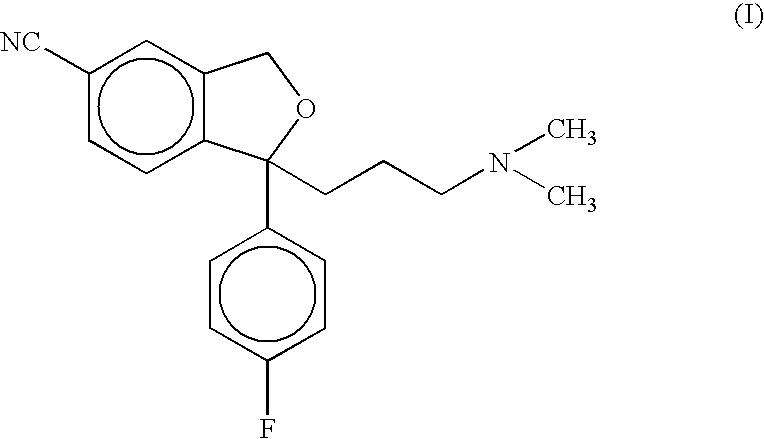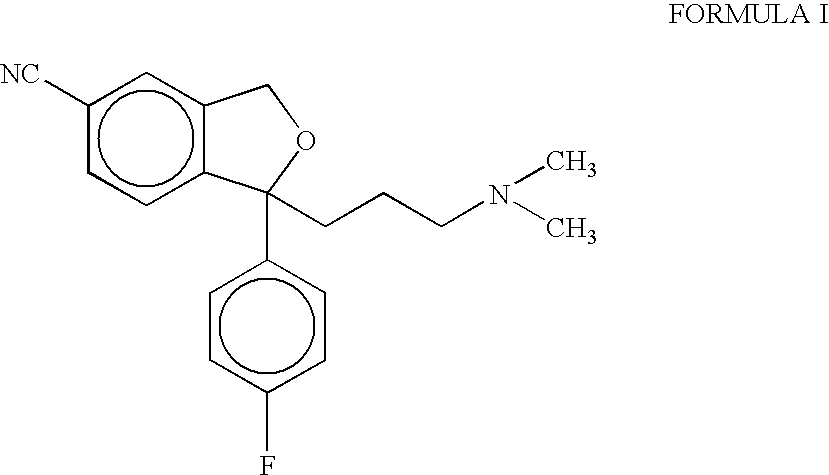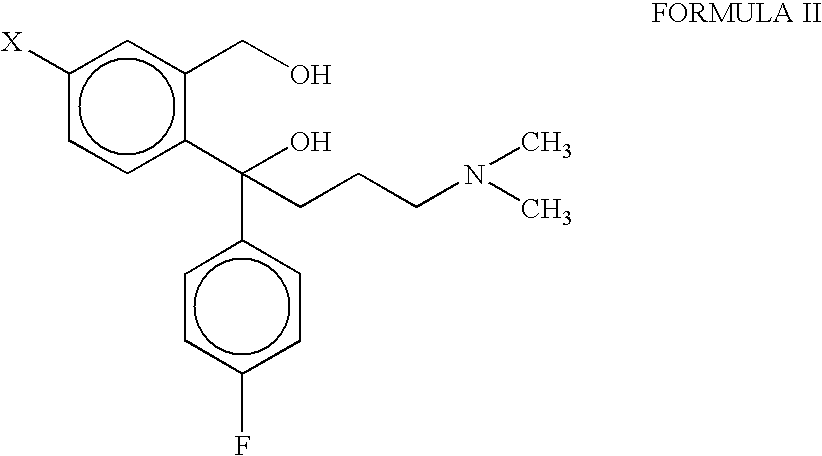Process for the preparation of citalopram
a technology of citalopram and process, which is applied in the field of process for the preparation of citalopram, can solve the problems of unsuitable process, difficult to separate the resulting citalopram from the corresponding 5-halo compound, and inconvenient handling at commercial scale, and achieves efficient and commercially viable process
- Summary
- Abstract
- Description
- Claims
- Application Information
AI Technical Summary
Benefits of technology
Problems solved by technology
Method used
Image
Examples
example 1
Preparation of Citalopram Base
[0023] 1-(4′-Fluorophenyl)-1-(3-dimethylaminopropyl)-5-iodophthalane (7.5 g, 18 mmol), cuprous cyanide powder (2.4 g, 27 mmol) and pyridine (5.6 g, 71 mmol) were added to dimethylformamide (40ml) and the mixture so obtained was heated to 140-141° C. The reaction mixture was further stirred at 140-145° C. for about 3 hours. The reaction mixture was then cooled to 35° C., and diluted with a cooled mixture of toluene and water. The organic layer was separated, washed with ammonia solution and water. The toluene was recovered completely under vacuum to get the product as a free base in the form of an oil (6.0 g)
example 2
Preparation of Citalopram Hydrobromide
[0024] Toluene (40 ml) was added to the above obtained free base of citalopram (6.0 g) and stirred to obtain a homogeneous solution. To this solution, was added aqueous HBr solution (48%, 3.6 g). The reaction mixture so obtained was then stirred for about 4 hours at 5-10° C. and toluene layer was decanted off. Fresh toluene (40 ml) was added to it and further stirred at 5-10° C. The separated solid was filtered, washed with toluene and dried to obtain citalopram hydrobromide (6.7 g, yield 93.7%, purity >98,5% by HPLC) as a crystalline powder.
PUM
| Property | Measurement | Unit |
|---|---|---|
| temperature | aaaaa | aaaaa |
| temperature | aaaaa | aaaaa |
| temperature | aaaaa | aaaaa |
Abstract
Description
Claims
Application Information
 Login to View More
Login to View More - R&D
- Intellectual Property
- Life Sciences
- Materials
- Tech Scout
- Unparalleled Data Quality
- Higher Quality Content
- 60% Fewer Hallucinations
Browse by: Latest US Patents, China's latest patents, Technical Efficacy Thesaurus, Application Domain, Technology Topic, Popular Technical Reports.
© 2025 PatSnap. All rights reserved.Legal|Privacy policy|Modern Slavery Act Transparency Statement|Sitemap|About US| Contact US: help@patsnap.com



